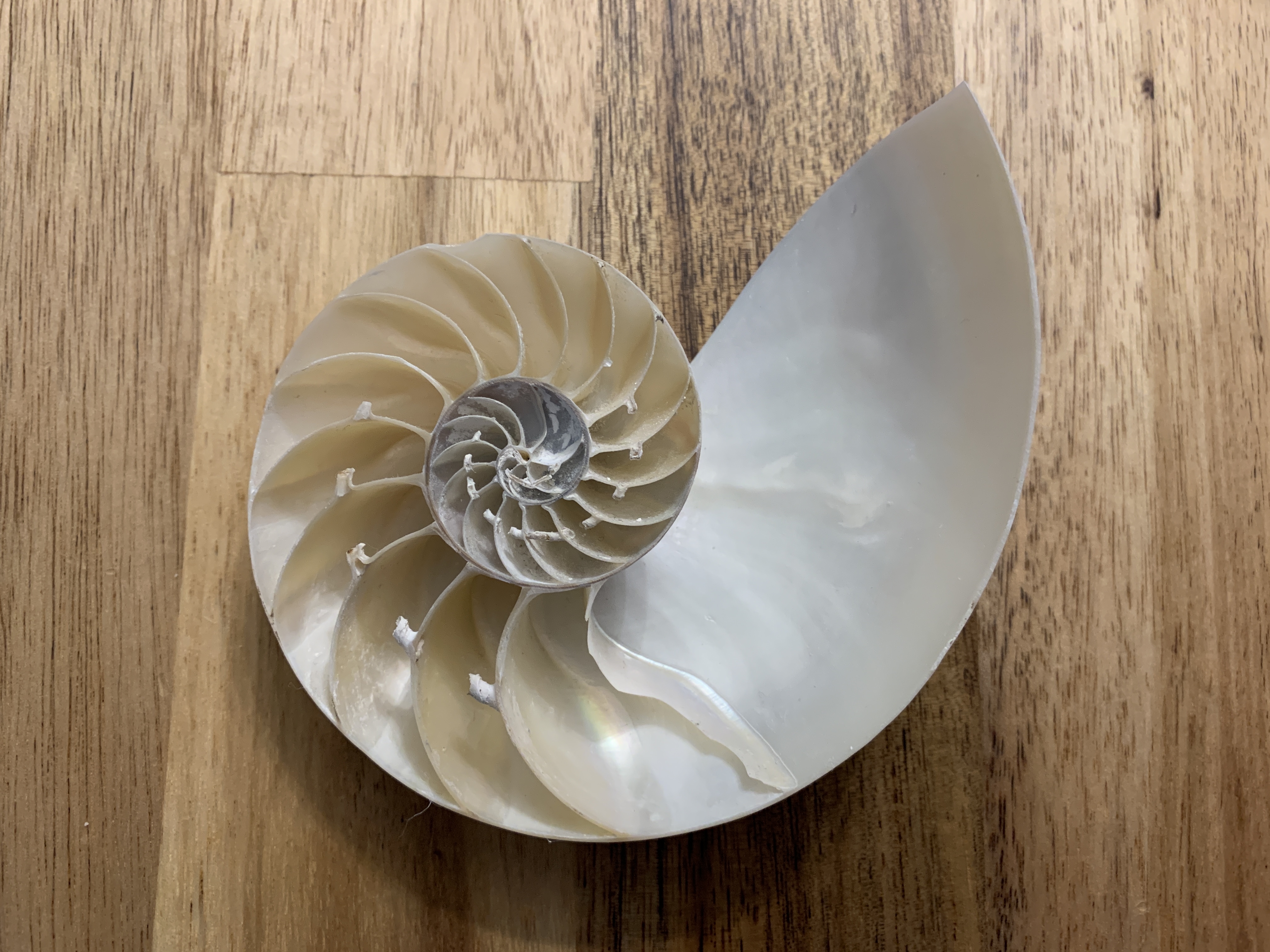Have you ever noticed how frequently patterns repeat? Our world is filled with them. Perhaps you’ve heard of the Fibonacci Sequence: 1, 1, 2, 3, 5, 8, 13, 21, 34, 55 … Any number in the sequence is calculated by summing the preceding two values: 1 + 1 = 2 (which gives the third Fibonacci number in the sequence), 1 + 2 = 3, 2 + 3 = 5, 5 + 8 = 13, and so on. When the Fibonacci numbers are calculated in terms of areas of rectangles, a Fibonacci spiral is formed by connecting opposite diagonals of the rectangles. You’ve seen this spiral pattern in nature.
Nature reflects so much of what we humans experience. Maybe you’ve already noticed this, but for me it is not only a marvel but also a comfort. For example, within every 24-hour period, due to Earth’s rotation, the sun rises and sets. God created our bodies to move and rest. Before Ben Franklin discovered electricity, the sun and moon directed us in productivity and recovery.
Nature’s seasonal variations have a dramatic influence on our lives (assuming we live in a climate with seasonal variations), giving us freedoms or restrictions. As years full of seasons come and go, we experience seasons of life—birth, childhood, adolescence, young adulthood, younger and older middle age, and old age (I don’t know when the latter season begins because old keeps getting older, probably the 90s, as I continue to age). We arrange our lives around both nature’s seasons and life’s seasons.

Pinwheel Galaxy. Credit: NASA
One of the things I love about the Anglican Church (and others) is how the church calendar is embedded in everything we do, from our worship service liturgy to the altar presentation and the candles around it. The liturgical calendar includes Advent, Christmas, Epiphany, Ordinary Time, Lent, Triduum, Easter, Pentecost, and Ordinary Time. The seasonal pattern helps us arrange our lives and prepare for what is coming. It teaches us how to live—how to take in and give out.
The famous scripture we all know identifies this very truth,
“For everything there is a season, and a time for every matter under heaven …”
Stories can also teach us how to live. Among many other vocations, Robert Coles was a child psychologist, professor, and author. I recently read his book, The Call of Stories: Teaching and the Moral Imagination. He was greatly influenced by a doctor friend and poet, William Carlos Williams who wrote the poem Paterson. Rob, my husband, a native New Jerseyan like Williams, tells me this New Jersey town is pronounced Pat-ter-son. This epic poem is written as if a man were a city, living life like an embodied city with its various facets.
“His repeated call to arms, the well-known phrase ‘no ideas but in things,’ is a prelude to distinctions he kept making between poetry and life; between ideas and action; between the abstract and the concrete; between theory and practice; and not least, between art and conduct. As he keeps stressing the importance of testing thought, whether the poet’s or the moralist’s, by measuring mind against conduct, he keeps submitting himself as an example: the doctor who attends patients regularly and who writes poems such as Paterson—and who is, thereby, in double jeopardy, because he may well fail to practice what he preaches to patients and readers alike. Williams uses the device of a nameless woman correspondent to confront himself, to provide a powerful Augustinian arraignment of his prideful side. These prose segments interrupt the poetry—as if the author is reminding himself and the reader that an aesthetic achievement, however graceful and persuasive, must be translated into the ordinary life of the world.”
I haven’t yet read the lengthy poem, but I love what Coles admired in it. What he is suggesting here is that, through the poem, Williams calls our attention to the necessity to move from “aesthetic achievement” to “ordinary life.” In other words, ideas must be embodied to move from theory to reality. Story can provide us with vision for how to transform, which is our goal with the Fiction that Forms Us podcast.
We admire the beauty, truth, and goodness in art for art’s sake, and we also let it lead us back to its source—the One who inspires it, who is Beauty, Truth, and Goodness Godself. There is a pattern here. We see, hear, feel, and experience the awe, wonder, beauty, truth, and goodness through art, nature, relationship, and more. But to keep from passively consuming it, we learn from it, absorb it, and let it infuse us until we carry it with us into the care-full exchanges of our daily lives. This take-and-give pattern is a way to honor what is.

